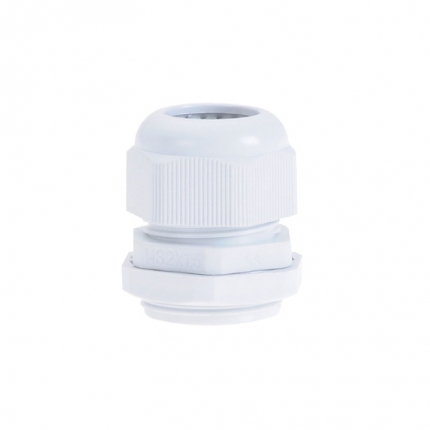Graphics of Waterproof cable glands and Specification Requirements for Waterproof cable glands
1. Connecting conductors of conductors requires low resistance and sufficient mechanical strength, and no sharp angle can appear at the joint. Medium and low voltage cable conductor connection is commonly used by pressure joint, pressure joint should pay attention to:
(1) Select suitable conductivity and mechanical strength of the conductor connection tube;
(2) The matching clearance between the inner diameter of the pressure nozzle and the outer diameter of the connected core is 0.8-1.4 mm.
(3) The resistance of the joints after bonding should not be greater than 1.2 times that of the conductors with equal cross-section, and the tensile strength of the copper conductor joints should not be less than 60N/mm2.
(4) Before pressing, the outer surface of conductor and the inner surface of connecting pipe are coated with conductive adhesive, and the oxide film is destroyed by wire brush.
(5) Connecting pipes, sharp corners on conductors of wire cores, rough edges, etc., polished smooth with a file or sandpaper.
2. Internal semiconductor shielding treatment.
Where the cable body has an internal shield layer, it is necessary to restore the internal shield layer in the joint of the conductor part of the pressure nozzle when making the joint. The internal semiconductor shield of the cable should leave a part in order to make the inner shield of the joint on the connecting tube interconnect with each other and ensure the continuity of the internal semiconductor, so as to make the field strength at the joint joint pipe uniformly distribute.
3. Treatment of external semiconductor shielding.
External semiconductor shielding is a semi-conductive material which acts as a uniform electric field outside the insulation of cable and waterproof cable glands. Like internal semiconductor shielding, it plays a very important role in cable and waterproof cable glands. The external semiconductor ports must be neat and uniform, and smooth transition with insulation is required, and the winding of the semiconductor band in the waterproof cable gland is overlapped with the external semiconductor shielding of the cable body.
Cable connector
4. Treatment of cable reaction cone.
During construction, the shape and accuracy of the reaction cone are equal in the potential distribution on the whole cone surface. When making the reaction cone of cross-linked cable, special cutting tools are usually used, and slightly heated by a slight fire, cutting with a fast knife. After basic shaping, the reaction cone is repaired and scraped with 2 mm thick glass. Finally, sandpaper is polished from coarse to fine until smooth.
5. Metal shielding and grounding treatment.
Metal shielding is mainly used to conduct short-circuit current of cable faults and electromagnetic interference of shielding electromagnetic field to nearby communication equipment. Metal shielding is in zero potential under good grounding state in operation state. When cable faults occur, it has the ability to transmit short-circuit current in a very short time. The grounding wire should be welded reliably. The metal shield and armor band on the body of the box cables at both ends should be welded firmly. The grounding of the terminal should be reliable.
6. Sealing and mechanical protection of joints.
Sealing and mechanical protection of joints are the guarantee to ensure the safe and reliable operation of joints. Water and moisture should be prevented from infiltrating into waterproof cable glands. In addition, joint protection grooves or cement protection boxes should be built at joint positions.



